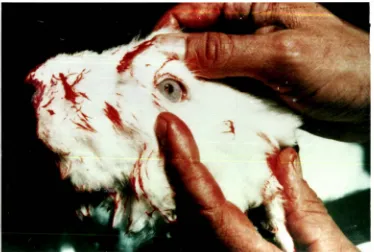Aspects of comparative rabbit meat hygiene : a thesis presented in partial fulfillment (60%) of the requirements for the degree of Master of Philosophy in Veterinary Pathology and Public Health at Massey University
Full text
Figure




Related documents
Prevalence and factors associated with one-year mortality of infectious diseases among elderly emergency department patients in a middle-income country.. Maythita Ittisanyakorn 1,2
Dairy calves are more likely than beef calves to experience welfare compromise through undernutrition or dehydration because of failure to suck or a delay between birth and
Although the information on cold-set gelation is limited as compared to that on heat-induced gelation, the results have showed that cold-set gels are different
The work is not aimed at measuring how effective your local polytechnic is, but rather to see what measures different community groups, including potential students, use when
In this model—which it is tempting to call the standard model—a sentence’s imaginative content is understood as a list of ways to change the atomic facts of actual world to imagine
Figure 5.23 The Keteira core site - continuous coupled logistic growth model.. Figure 5.24 The Keteira core site - discrete logistic growth
In this paper we trace the early history of relativistic su- pertasks, as well as the subsequent discussions of Malament-Hogarth spacetimes as physically-reasonable models
The structure and magnitude of the oceanic heat fluxes throughout the N-ICE2015 campaign are sketched and quantified in Figure 4, summarizing our main findings: storms





